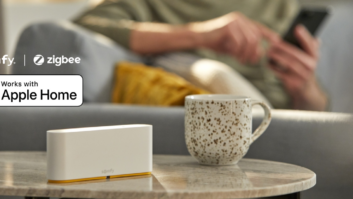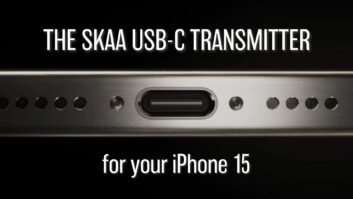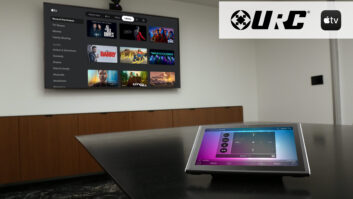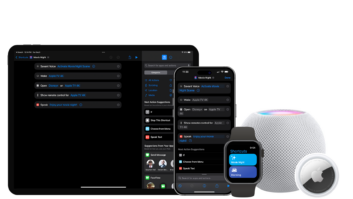With the opening of the CEDIA show floor only a few short days from now, our industry’s best and brightest will be converging on Dallas. The show promises to be a source of inspiration, allowing home tech pros to enhance key relationships, and to spot the key products and services that will propel our industry forward. But it’s worth noting that while we are scouring the show floor for the next big thing, a significant event, with the potential to profoundly impact the long-term trajectory of the connected home, will be taking place 1,600 miles away in Cupertino, when Apple releases iOS 10 to the public.
Formally announced at Apple’s iPhone 7 event last week, the public release of iOS 10 will take place tomorrow, September 13. Included as part of the operating system is the Home app, Apple’s first foray into creating a control interface for HomeKit-compatible products. Tim Cook himself calls this a “huge moment for home automation,” and it’s hard to disagree. It’s safe to say that fully half of our existing and potential clients are iPhone users. Once they update to iOS 10, the Home app will appear on their devices. Inquiries from these curious clients and prospects are sure to follow.

Photo courtesy of Apple
Preparing ourselves to speak in an educated manner about the Home app, and the broader HomeKit platform, is the key to using Apple’s initiative to your own benefit. Here is a quick primer on HomeKit, including its strengths and limitations. These are the tools we can use to help steer the conversation effectively when clients ask if HomeKit is right for them…
Who Benefits from HomeKit?
In its current iteration HomeKit is a great system only for those looking for a very basic level of home control and integration. With the Home app baked right into iOS 10, a clear benefit to HomeKit for existing Apple users is that there is no additional hardware required to get started. Users can simply purchase a HomeKit-compatible device (Apple keeps a running list of them HERE), and they’re off to the races. Once it’s brought online, Apple’s new Home app will automatically discover and connect with a new device. Clearly this low cost and ease-of-configuration are value propositions for HomeKit.
Once paired with the Home app, these devices can also be controlled via Siri, which, while not as convenient as an Amazon Echo, will be compelling for some users. Another critical HomeKit feature on iOS 10 is the ability to control smart home devices right from the control center—hallowed ground in the world of iOS development. I suspect that being able to quickly swipe up from the bottom of the screen to access HomeKit devices will be a very compelling feature for users, many of whom have begun to develop “app fatigue.”
HomeKit’s Limitations
For all its long-term promise, selling against HomeKit is not difficult. Apple’s initiative still has a long way to go before it can directly compete with today’s sophisticated control systems, assuming of course that this is even their ultimate goal. Most prominent among its limitations is the relatively tiny number of compatible devices. While Apple does claim to have 100 more products coming online this year, their stringent certification process has, to date, greatly hampered the efforts of new partners to come on board. Their current list is primarily comprised of devices such as smart light bulbs, sensors, thermostats, and smart locks. While entertainment devices such as TVs, set-top boxes, and media servers are non-existent.
Another limitation of HomeKit presents itself in the area of notifications. For reasons that aren’t immediately obvious, Apple has decided not to allow push notifications from some security-related devices such as window and door contacts. This seems like a strange omission from a company looking to penetrate the smart home market from the low end, where security is by far the most cited feature by buyers looking to open their wallets.
Clearly the proprietary nature of HomeKit is something that buyers will also have to consider. While legacy home control platforms do represent a larger financial investment, they are built from the ground up to control anything we can throw at them. Given their propensity to take a “walled garden” approach to technology, Apple is unlikely to ever embrace this sort of flexibility. This present clear limitations to consumers whose needs require any level of flexibility or customization in their home control systems.
Apple’s Moves. Our Advantage.
With the release of their own control app, there can no longer be any mistaking Apple’s intentions in the smart home. To quote Tim Cook at their recent event, Apple thinks the Home app “is going to be a really big deal.” While HomeKit holds a lot of promise, it’s still a fairly limited platform. But given Apple’s commitment, combined with its brand power, it is hard to imagine that smart home device makers won’t eventually toe the line en masse.
There is room for debate about whether Apple will succeed in taking the smart home mainstream, as well as how long it might take them. But whether we plan to differentiate and sell against HomeKit indefinitely, or to seek ways to incorporate it into our businesses, we must first understand Apple’s offering inside and out. Only then can we use their initiative to our advantage.







